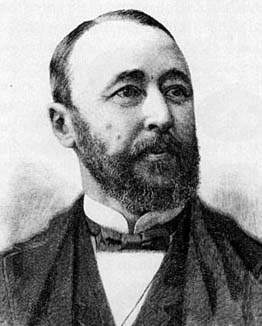

تاريخ الرياضيات

الاعداد و نظريتها

تاريخ التحليل

تار يخ الجبر

الهندسة و التبلوجي


الرياضيات في الحضارات المختلفة

العربية

اليونانية

البابلية

الصينية

المايا

المصرية

الهندية


الرياضيات المتقطعة

المنطق

اسس الرياضيات

فلسفة الرياضيات

مواضيع عامة في المنطق


الجبر

الجبر الخطي

الجبر المجرد

الجبر البولياني

مواضيع عامة في الجبر

الضبابية

نظرية المجموعات

نظرية الزمر

نظرية الحلقات والحقول

نظرية الاعداد

نظرية الفئات

حساب المتجهات

المتتاليات-المتسلسلات

المصفوفات و نظريتها

المثلثات


الهندسة

الهندسة المستوية

الهندسة غير المستوية

مواضيع عامة في الهندسة

التفاضل و التكامل


المعادلات التفاضلية و التكاملية

معادلات تفاضلية

معادلات تكاملية

مواضيع عامة في المعادلات


التحليل

التحليل العددي

التحليل العقدي

التحليل الدالي

مواضيع عامة في التحليل

التحليل الحقيقي

التبلوجيا

نظرية الالعاب

الاحتمالات و الاحصاء

نظرية التحكم

بحوث العمليات

نظرية الكم

الشفرات

الرياضيات التطبيقية

نظريات ومبرهنات


علماء الرياضيات

500AD

500-1499

1000to1499

1500to1599

1600to1649

1650to1699

1700to1749

1750to1779

1780to1799

1800to1819

1820to1829

1830to1839

1840to1849

1850to1859

1860to1864

1865to1869

1870to1874

1875to1879

1880to1884

1885to1889

1890to1894

1895to1899

1900to1904

1905to1909

1910to1914

1915to1919

1920to1924

1925to1929

1930to1939

1940to the present

علماء الرياضيات

الرياضيات في العلوم الاخرى

بحوث و اطاريح جامعية

هل تعلم

طرائق التدريس

الرياضيات العامة

نظرية البيان
Peter Ludwig Mejdell Sylow
المؤلف:
H Freudenthal
المصدر:
Biography in Dictionary of Scientific Biography
الجزء والصفحة:
...
22-12-2016
1341
Died: 7 September 1918 in Christiania (now Oslo), Norway

Ludwig Sylow studied at Christiania University and won a mathematics contest in 1853. He then took the high school teacher examination in 1856 and, as no university post was available, taught in the town of Frederikshald from 1858 to 1898.
Sylow continued his mathematical studies however (see [2])
at first working on elliptic functions in the tradition of Abel and Jacobi, inspired by the professor of pure mathematics Ole Jacob Broch. Finding Abel's papers on the solvability of algebraic equations by radicals more interesting, Sylow was led from them (by the professor in applied mathematics, Carl Bjerknes) to Galois.
In 1861 Sylow obtained a scholarship to travel and visited Berlin and Paris. In Paris he attended lectures by Chasles on the theory of conics, by Liouville on rational mechanics and by Duhamel on the theory of limits. He says, in the report he wrote at the end of the scholarship, that he also:-
made myself acquainted with newer works, particularly in the theory of equations.
In Berlin he had useful discussions with Kronecker but was unable to attend courses by Weierstrass who was ill at the time.
In 1862 Sylow lectured at the University of Christiania, substituting for Broch. In his lectures Sylow explained Abel's and Galois's work on algebraic equations. A summary of these lectures is presented in [2]. It is worth noting that although he had not proved 'Sylow's theorems' at this time (he published them 10 years later) he did pose a question about them. After proving Cauchy's theorem that a group of order divisible by a prime p has a subgroup of order p, Sylow asks whether it can be generalised to powers of p.
Between 1873 and 1881 Sylow and Lie prepared an edition of Abel's complete work. Lie said that most of the work was done by Sylow. However Sylow's fame rests on one 10 page paper published in 1872.
In this paper Théorèmes sur les groupes de substitutions which Sylow published in Mathematische Annalen Volume 5 (pages 584 to 594) appear the three Sylow theorems. Cauchy had already proved that a group whose order is divisible by a prime p has an element of order p. Sylow proved what is perhaps the most profound result in the theory of finite groups.
If pn is the largest power of the prime p to divide the order of a group G then
- has subgroups of order pn,
- has 1 + kp such subgroups,
- any two such subgroups are conjugate.
Almost all work on finite groups uses Sylow's theorems.
Sylow became an editor of Acta Mathematica and, in 1894, he was awarded an honorary doctorate from the university of Copenhagen.
Lie had a special chair created for Sylow at Christiania University and Sylow taught at the university from 1898.
- H Freudenthal, Biography in Dictionary of Scientific Biography (New York 1970-1990).
http://www.encyclopedia.com/doc/1G2-2830904229.html
Articles:
- B Birkeland, Ludwig Sylow's lectures on algebraic equations and substitutions, Christiania (Oslo), 1862: An introduction and a summary, Historia Mathematica 23 (1996), 182-199.
- G Casadio and G Zappa, History of the Sylow theorem and its proofs (Italian), Boll. Storia Sci. Mat. 10 (1) (1990), 29-75.
- R Gow, Sylow's proof of Sylow's theorem, Irish Math. Soc. Bull. 33 (1994), 55-63.
- H B Kragemo, Ludwig Sylow, Norsk Matematisk Tidsskrift 15 (1933), 73-99.
- J Lützen, The mathematical correspondence between Julius Petersen and Ludwig Sylow, in S S Demidov et al. (eds), Amphora : Festschrift for Hans Wussing on the occasion of his 65th birthday (Basel- Boston- Berlin, 1992), 439-467.
- W Scharlau, Die Entdeckung der Sylow-Sätze, Historia Math. 15 (1) (1988), 40-52.
- T Skolem, Ludwig Sylow und seine wissenschaftlichen Arbeiten, Norsk matematisk forenings skrifter 2 (1933), 14-24.
- E Stensholt, Ludvig Sylow and his theorems (Norwegian), Normat 31 (1) (1983), 17-29.
- W C Waterhouse, The early proofs of Sylow's theorem, Arch. Hist. Exact Sci. 21 (3) (1979/80), 279-290.
 الاكثر قراءة في 1830to1839
الاكثر قراءة في 1830to1839
 اخر الاخبار
اخر الاخبار
اخبار العتبة العباسية المقدسة

الآخبار الصحية















 قسم الشؤون الفكرية يصدر كتاباً يوثق تاريخ السدانة في العتبة العباسية المقدسة
قسم الشؤون الفكرية يصدر كتاباً يوثق تاريخ السدانة في العتبة العباسية المقدسة "المهمة".. إصدار قصصي يوثّق القصص الفائزة في مسابقة فتوى الدفاع المقدسة للقصة القصيرة
"المهمة".. إصدار قصصي يوثّق القصص الفائزة في مسابقة فتوى الدفاع المقدسة للقصة القصيرة (نوافذ).. إصدار أدبي يوثق القصص الفائزة في مسابقة الإمام العسكري (عليه السلام)
(نوافذ).. إصدار أدبي يوثق القصص الفائزة في مسابقة الإمام العسكري (عليه السلام)


















